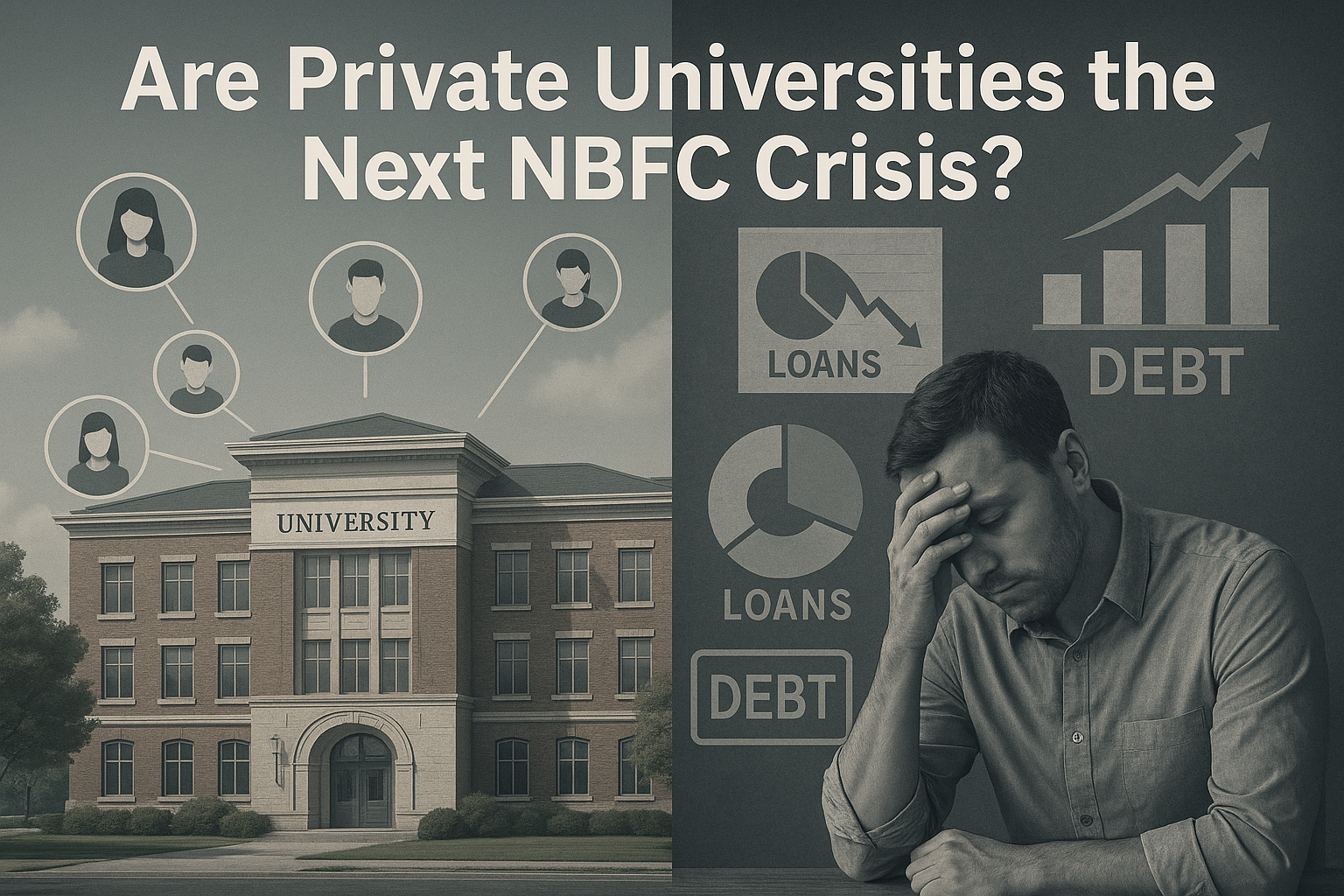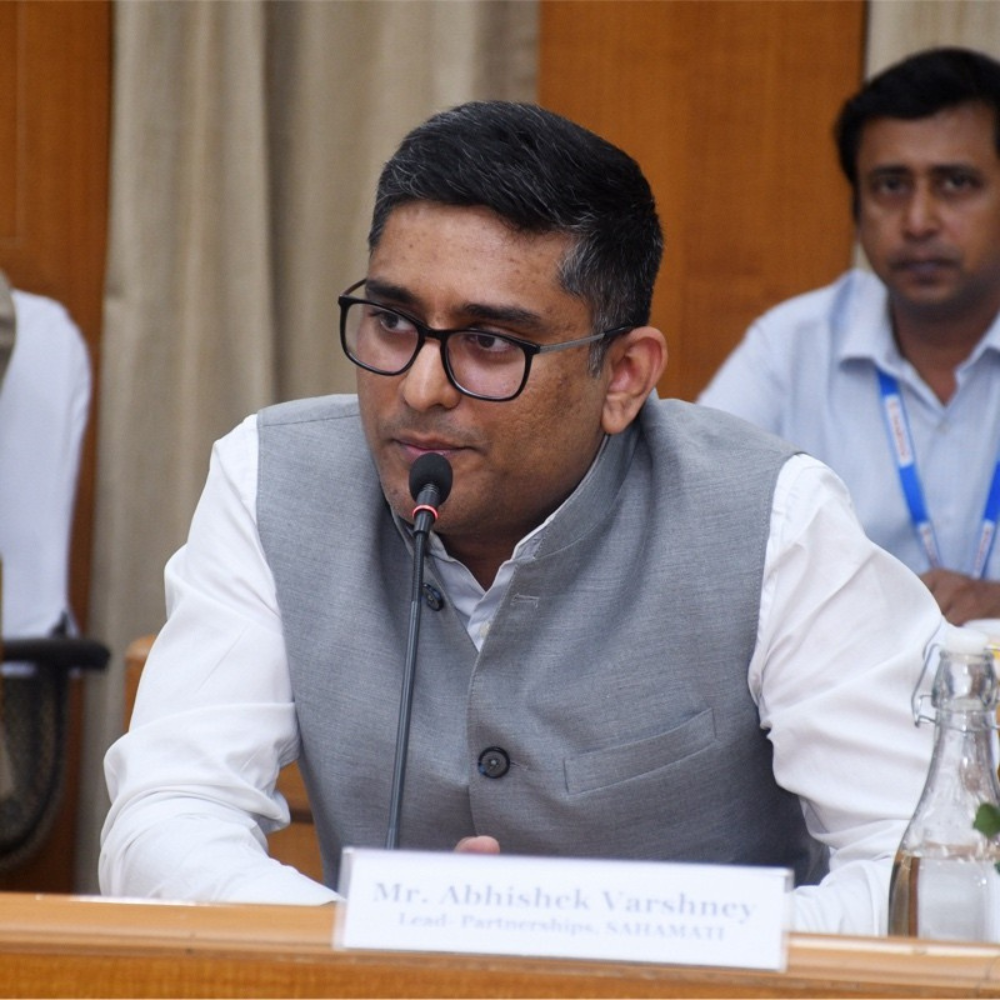A recent opinion piece in Deccan Herald warns that mounting debt, shaky enrollments, lax regulation, and aggressive fundraising may push private universities toward an unsustainable financial model—not unlike what triggered India’s non‑banking financial company (NBFC) crisis. These higher education institutions now present red flags for policymakers, students, and regulators alike.
Why the Comparison to NBFC Stress Is Worrying
1. High Leverage and Debt Exposure
Much like mid‑sized NBFCs that borrowed heavily from capital markets, many private universities rely on capital from debt and revenue bonds, with rising interest costs and limited endowments or alumni support to cushion shocks.
2. Declining Student Demand and Fee Pressures
Several institutions face low enrollment and unsustainable fee structures. When projected tuition revenue doesn’t materialize, institutions still must service their debt—creating a liquidity crunch akin to NBFC defaults.
3. Weak Regulatory Oversight & Financial Non‑Transparency
Unlike banks and NBFCs, private universities operate with minimal financial scrutiny. There is no standardized requirement to publish audited accounts or limits on fee hikes, leading to capitation fees and disguised donations.
Structural Context: Growth & Pitfalls of Private Universities in India
-
From under 20 in 2005, private universities now account for roughly 59% of higher education enrolment. Around 400 such institutions exist, many under state legislation, self-financed and ineligible for grants.
-
Most are fee-dependent, lacking long-term funding models. With state allocations stagnant at ~3% of GDP for education and aged public systems unable to absorb expanding student demand, reliance on private capital has grown intensely.
NBFC Lessons & Higher Education Risks
| NBFC Crisis Factors | Private University Parallels |
|---|---|
| Rapid leverage growth via borrowings | Debt-funded campus expansions without predictable income |
| Liquidity mismatches amid tighter credit | Falling enrollments reduce revenue for debt servicing |
| Governance and transparency gaps | No regular disclosure of financial or audit statements |
| Regulatory arbitrage and system opacity | Minimal central oversight, varying state rules |
These similarities spotlight an institutional risk—if student enrolment or investor capital dries up, many private institutions may face solvency issues.
Impacts on Key Stakeholders
-
Students/Parents: Risk fee hikes, sudden seat cancellations, abrupt campus closures, or termination of courses. Fee transparency issues, especially in private medical institutions, remain rampant.
-
Governments & Regulators: Must decide whether public funding, accreditation oversight, or debt limits should be imposed to avert crisis. A policy intervention similar to bank recapitalization may become necessary.
-
Academic Sector: Closure of institutions or financial insolvency can degrade national educational capacity and tarnish investor credibility.
-
Financial Markets & Lenders: Institutions issuing bonds or tapping alternative credit need better risk assessment frameworks.
Calls for Reform & Systemic Safeguards
To prevent recurrence of the NBFC-style meltdown in education:
-
Mandatory Financial Disclosure: Universities should publish audited financial statements and debt obligations annually.
-
Fee Regulation & Transparency: Break down tuition vs. development and capitation-related fees—especially in management quota scenarios.
-
Debt Caps: Limit leverage ratios based on actual enrollment forecasts and validated funding sources.
-
Accreditation Enforcement: Strengthen UGC and AICTE authority to revoke licenses or take action for non-compliant institutions.
-
Financial Stability Oversight: Central or state agencies should monitor worsening debt stress—considering corrective interventions where necessary.
Conclusion
The “next NBFC crisis” metaphor serves as a critical warning signal: India’s private universities are a growing financial ecosystem vulnerable to liquidity shocks, governance failures, and speculative funding. Without regulatory accountability, financial transparency, and governance reform, many institutions risk default. As India pushes toward its vision of expanded higher education access by 2035, policymakers must act to avert financial collapse in this emerging segment.












